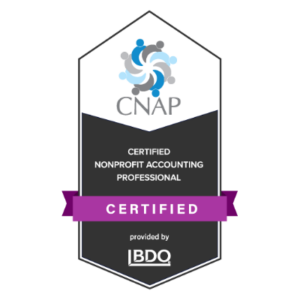If we were having coffee together today (well, tea for me!), I’d tell you that I’m training to run a marathon right now. It’s my first road race of any sort in nearly a decade – I completed 7 marathons in my 20s and replaced running with multiple IVF treatments, 2 pregnancies, 2 births, raising two little girls, and building a business
My Second Grade Failure
When I was in second grade, I memorized all fifty states, in alphabetical order in a day, thanks to the catchy song, Fifty Nifty United States. #iykyk
Because I was an 8-year-old overachiever, I boasted to my teacher that I would also memorize all (at that time) 41 presidents in order and that I would recite them to her the next day, giving me roughly 18 hours to accomplish my self-imposed challenge
Monthly Finance Habits for Better Numbers in 2022
Monthly finance habits aren’t just about looking at the numbers – they’re also about changing behaviors to proactively make smarter decisions that will ultimately affect your bottom line! You should know what you made, spent and saved every single month so you can understand how your business is doing.
Because here’s the #truth:
There is such a thing as a bad surprise, especially when it comes to your business finances.
Imagine…
Every month, you’re feeling better and better about your business’s progress.
You’re making more sales than the previous month and even started growing your subscriber list!
But then it happens: A surprise that ruins everything.
You get slapped with a problematic charge or lose out on some additional revenue because of an oversight in billing. The news weighs heavily on your shoulders. How could this possibly happen? Everything was going so well!
Was it an oversight because of poor forecasting, with you not accounting for this possible charge?
Perhaps you fell short in some area of your business? Or maybe the competition was more aggressive than you thought they would be?
Things like this happen in business, but there’s one thing you can always do to keep your financial outlook clear:
Make your goals a monthly habit.
Not quarterly.
Not annually.
MONTHLY.
If you want to stay on top of your business finances, then you need to keep an eye on how much cash you have in the bank EVERY MONTH.
If you want to stay ahead of your taxes, then you need to make sure you are tracking how much money your business made EVERY MONTH.
If you want to stay on top of your bills, etc., then you need to make sure that sales are forecasted EVERY SINGLE MONTH (preferably before the end of the month).
It’s easy to get sidetracked with so many responsibilities, so proper planning is vital to keep your business running smoothly.
Click here to learn more about how you can start designing your own monthly finance routine.
Making your financial goals part of your monthly habit means doing the following:
You can take control of your business finances by implementing good + consistent monthly finance habits. And it’s not as hard as you think! Here are 3 monthly habits that you can start practicing today.
1. Do your bookkeeping.
Updating your books should be done at the end of every month or even weekly, if you’re a solopreneur. Review your bank statements and reconcile them. Make sure the numbers add up!
You can read more about how to do better bookkeeping here: How to Improve Your Bookkeeping in Three Steps
2. Review your Profit & Loss statement and key metrics.
A monthly P&L review will help you make sure your income is growing and that you’re on track to achieving your financial goals.
Here’s a simple way of doing it:
- Take a look at the numbers for last month.
- Is it higher or lower than what was forecasted?
- If they’re higher, then great! This means that your business is making more money than anticipated.
- If those numbers are lower, though…it could mean that projections were off or that something unexpected happened (e.g., a client backed out from a project).
In either case, this would be an opportunity to dig into the details and find out where things really went wrong so you can do better next month.
Check out this podcast episode where I talk about what goes on behind-the-scenes of a CFO meeting, what’s a P&L statement, and how measuring this metric is key to better forecasts: https://100degreesconsulting.com/episode-34/
3. Don’t forget to update your projections for the rest of the year.
Forecasting is every entrepreneur’s best friend. That’s why you need to make sure your numbers are forecasted every single month!
Doing so will help you figure out how much cash you need to have in the bank NEXT MONTH before everything else comes up (like taxes). We usually do this BEFORE the end of every month.
If you’re having trouble with this concept, start SUPER small – maybe use 2-3 months’ worth of expenses as a benchmark. Then grow that number slowly over time until you find something that feels comfortable for your business. That way, you not only prepare for them, but also help ensure your bank account has enough cash to cover even surprise expenses.
Questions to ask yourself when forecasting:
- How much can you spend next month?
- 2 months from now?
- 3 months from now?
- What are the specific expenses that need to be accounted for BEFORE they come up?
It all comes down to this: If you don’t plan ahead and make your financial goals a MONTHLY HABIT, then you won’t achieve them no matter how big or small they are.
3 BONUS TIPS FOR BETTER MONTHLY FINANCE HABITS:
Set financial goals that are measurable and timely. If you want to reach $500k in sales by year-end, then break down how many sales per month it will take to get there.
Set realistic expectations, so you don’t sabotage your progress. Let’s say you want to grow your clientele by 10% each month. If that doesn’t seem possible, then adjust the goal accordingly: 5%, 7%, etc.
Perform an inventory count to make sure you don’t run out of any supplies, you have enough hours to complete a project, etc.
Conclusion:
Proper planning is necessary to keep things running smoothly behind-the-scenes.
In order for you to achieve your goals, have a monthly finance habit that includes:
- Doing your bookkeeping.
- Reviewing your Profit & Loss statement and key metrics.
- Updating your projections for the rest of the year.
By working these three things into YOUR monthly routine ahead of time, they’ll become second nature. Before long, instead of feeling stressed about it all, you’ll know what is coming each month so there’s no “surprise!” when it comes to your business’s numbers.
How to Pick Your Power Word(s) of The Year
Is it too late to talk about power words a.k.a your Word(s) of The Year? I want us to talk about this for a hot minute… and if you haven’t picked your power word for the year yet, maybe this can even help you with that!
Now, I don’t know about you, but I love picking out my power words because they act as special reminders that help us become more focused on what we need to power up for the year.
For example, my word(s) of the year are Intentional Ease.
That’s because, as much as I love taking action and doing #allthethings, I am also well-aware that I need to be intentional about what needs to be done, and do so in a way that does not cause unnecessary stress for me, my team, and our clients.
So, not only do my power words help me narrow my focus and get more strategic about the tasks that I want to tackle, but it also allows me to be more present in how I live my life and run my business.
“But I haven’t quite picked my Word/s of The Year yet, Stephanie! How do I even choose when there are sooo many things I want to manifest in 2022?”
Worry not, my friend!
Here are 4 actionable tips to pick AND use your power word/s:
1. Ask yourself, “If you had to pick just ONE word that can help guide and inspire your life in all areas, what would it be?”
I’m not asking you to identify an action step or a word that is meant to be achieved completely this year. It doesn’t have to sound cool or poetic either. Rather, it’s about a word or an intention that you want to weave into your life over the next 12 months.
For example, mine is Intentional Ease and I want to bring ease into every area of my life – be it in mindset, health, relationships and business!
2. Grab a dictionary and identify power words that help you tap into your Power Mood!
Having power words doesn’t mean that they will play out exactly how you imagined. So, in order to prevent power words from draining your energy, it’s best to use power words that play into what I like to call “power moods.”
There are tons of power moods out there! Here’s a few examples to give you some perspective: ambitious, happy, relaxed, unfazed, and unapologetic.
You can even make a list of words that have unique meanings to you!
3. Reflect on what transpired last year and see if there are any recurring themes that you want to incorporate into this year.
If there’s something great that went on in the previous year that you want to bring into the next, then there’s no harm in choosing words associated with the power word you chose in the previous year.
For example, in 2019, my power word was BUILD. Then in 2020, my power word was EXPANSION.
4. Create a visual reminder of your power word.
The magic of your power word(s) lies in its ability to act as a daily reminder of what you want to become and how you want your year to go.
One way to keep your power word top of mind is by creating a vision board with your power word written somewhere on big, bold letters! I personally like to use Post-its and my journal as a tangible and visual reminder, but as with anything, you should go for what works for you.
So, whether it’s a poster, a visionboard, or even a journal – just make it tangible and easy to access!
I hope you give power words a try and let’s power up together!
Launching Soon: 100 Degrees of Entrepreneurship Podcast
I had this little idea in the back of my mind.
Sometimes when I’d be in the car alone, I’d practice an intro. “Hi, I’m Stephanie! Welcome to my podcast!”
I’d dream of how I’d interview guests. “Tell me the story of your business journey.”
Then one day, late last year, I decided now is the time and it all came together. Equipment, production, marketing, content – let’s just say it was a learning curve.
I am so thrilled to let you know that…
100 Degrees of Entrepreneurship Podcast
Launches on March 1st!
The show is a mix of solo and interview episodes where I chat with inspiring business owners to share their journey and experiences where they pushed outside their comfort zones to create impact on the world.
The first three episodes will drop on March 1st and you’ll be able to listen on iTunes, Spotify, and Google.
- In Episode 1, I share my personal story – how a failed wannabe lawyer turned nonprofit worker built a business serving hundreds of leaders around the globe.
- In Episode 2, I chat with Jessica Rasdall, a speaking expert who has turned her mess into her message.
- In Episode 3, we blow your mind by explaining the difference between a bookkeeper, accountant, and CFO and what you’re missing without one of these critical roles.
This podcast is my heart and my dream and I’m equally terrified and over-the-moon excited to launch it into the world.
Stay tuned for an email on March 1st to let you know it’s live!
New Podcast Episodes Drop Each Week.
Get on our Email List
There is such thing as a bad surprise
You will not achieve your goals if you don’t make them a monthly habit.
Not quarterly. Not annually. Monthly.
If you are surprised when your tax accountant tells you how much money you made last year when they’re preparing your taxes, you’re doing business wrong.
How much you make…
How much you spend…
How much cash is in the bank… 💰
…Should NEVER be a surprise! 😲
Savvy business owners who grow to 6- and 7-figures look at their numbers every single month – both what happened last month and their forecast for next month – so there is no surprise.
But what should you actually DO every month?
1. Do your bookkeeping. Make sure your numbers are accurate and reconciled.
2. Review your Profit & Loss statement and key metrics.
3. Update your projections for the rest of the year.
Have you ever been surprised by the numbers in your biz? Grab our Profit Playbook to build your own plan and never be surprised again! http://100degreesconsulting.com/profit/
If your Profit Playbook is helpful, please share on Instagram and tag me @stephanie.skry
You’re going to hate this idea
Okay, friend.
I’m going to share a time when I had hit a wall.
I was trying to schedule an important meeting and the only time that was free was in the evenings after my girls were in bed. I ended every single day with a longer to-do list than when I started and I dreaded clicking that Zoom link yet again.
Intentionally working “after hours” was never part of my business plan.
My schedule had become filled with things that I didn’t like doing and that I wasn’t good at, and I knew something had to change.
Instead of metaphorically burning the whole business down (although I threatened it!), I decided to track my time for a few weeks and see where it was going!
Here’s the thing:
Time is an input to results.
We all want results, like hitting a certain revenue goal or serving a certain number of people. There are things we can do to help those results along, and spending our time is one input to our results.
So I looked back at my calendar for the previous five months to categorize and assess exactly where my time was going.
The results?
I spent about 2.5 days a week on calls! I got instant clarity on why I was feeling crunched.
Are you feeling the calendar crunch too? I suggest you do a time study!
Just like analyzing your finances is worthless unless you’re going to use the information to make smart decisions, the time study was pointless unless I actually did something about it.
I started batching calls, blocking time for no-meeting days, and adding rest and creative work time into my schedule so my weeks were more conducive to achieving my goals.
Are you investing your time in what activities will get you closest to your goals?
PS – Your weekly schedule should be a direct reflection of your biggest goals, so make sure that your time is spent on your goals!
Follow along on Instagram to see how my weeks look >>> @stephanie.skry
Are your habits aligned with your goals?
Welcome to February, the month where New Year’s resolutions go to die!
***thinks of 25 year old Stephanie who made long rambling lists of things to accomplish in 365 days, like “learn to sail”***
Here’s what I’ve learned:
Everything doesn’t need to get done immediately.
True instant gratification doesn’t exist when it comes to our big goals.
For example, I thought about starting a podcast last year but knew that there was important groundwork I needed to lay before doing that. Rather than rushing it and releasing an okay version of the podcast just to check it off a list, I decided to wait until I was ready to do it right. (Hint, hint, exciting things coming!)
I’ve learned that little steps that become daily habits are much more effective to achieve your goals and have a bigger impact. And sometimes the little steps are actually just daily habits that we want to cultivate that will eventually add up to a much bigger impact.
When I wrote this, I went back and looked at my daily routine over the last five years and it has shifted and changed as my goals and priorities have changed. But the common thread is that my routine is always aligned with my goals.
Right now, my daily routine includes:
- Exercising first thing every morning
- Reading before bed
- Drinking at least 64 oz of water
- Tidying my workspace and the rest of my home
- Writing in a journal
These daily habits keep me grounded, calm, focused, balanced, in control, and growth-minded. It’s like a mini checklist towards achieving my goals.
If your money or finances are part of your goals this year, your daily routine might include:
- Checking your bank balance
- Reviewing your forecast
- Journaling about any mindset blocks
- Check in with a friend
- Practice self-care
PS – Daily routines are mini steps towards our big goals, so make sure that your days look like where you want to go. Want bite-sized pieces of content like this? Follow along on Instagram >>> @stephanie.skry
5 Ways to Maximize Your Money Before December 31
Lists are kind of my thing. If there are more than two of anything, I will make a list. So December, with its shopping lists, gift guides, and year-end planning to-dos galore, is my favorite time of year.
Speaking of year-end planning, I wanted to share a few things that you can do as a leader to potentially save on taxes and maximize your money, friends!
Many of our clients had a really strong 2020, meaning a large net income. That’s amazing and worthy of celebration, but also comes with a potentially larger tax bill. I like to look at my taxes with gratitude (it means it was a great year!) but I also want to maximize my money because abundance leads to more abundance!
Here are some ideas to maximize your money:
- Max out your retirement accounts. I’ve had a SEP IRA for a couple years now and always aim to max it out as early in the year as possible – this particular account lets you contribute 25% of your salary which is awesome. It’s a deductible expense for your business AND tax deferred savings for your future. I know it sounds intimidating, but it took me about 10 minutes to open and contribute to an account. My SEP IRA is at Vanguard.
- Donate to your favorite charity. My biggest challenge in donating to charities is choosing which one! I’ve worked with nonprofits for over a decade so it feels nearly impossible to choose just one worthy cause. Charity Navigator and Guidestar are great places to start researching nonprofits if you aren’t sure where exactly to donate. Charitable donations are also tax deductible, so win-win (just check with your CPA on any limits).
- Pay all your bills. If you’re looking at significant net income (that’s the money you have left over after all expenses), that also might mean a significant tax bill. To reduce that amount, pay your bills! Examples: you owe your coach a few more installments of your annual coaching program or your second payment for your website design is coming up in January. Pay them all now to increase your 2020 expenses and reduce your tax bill.
- Make any large purchases. Okay, listen very carefully. I am, IN NO WAY, advocating purchasing things you don’t need just to reduce your tax bill. However, if you have the cash in the bank (after setting aside your 3 month reserve), and there are major purchases you were going to make in January anyway, buy them now to reduce your net income and tax bill.
- Delay your income. Again, this is a strategy for those business owners who have significant net income at the end of the year. If you were planning on billing a client at the end of December, perhaps send your invoice in early January instead, so the revenue is collected next year. In a sense, this is “kicking the can down the road” but who knows what the next 12 months will hold, so why not take the benefit now.
Did you have a year of abundance? Which money maximizing strategies are you using in the next two weeks?
If you want to get on our calendar to maximize your money all year long, schedule a time to chat here >>>
If you aren’t sure which finance pro you need on your team, and the terms bookkeeper, CFO, and CPA are confusing, take our quiz here >>>
Note: This is not tax advice. Please talk to your CPA for specifics on how this applies to your business and personal tax situation.
How to Set Goals for Your Nonprofit Organization
As originally posted on nonprofitinformation.com
Many nonprofit leaders are hesitant to create major goals this year, given the instability and uncertainty across the country and in our industry. The fundraising landscape has changed drastically in the last year as donors are reconsidering priorities, so nonprofit leaders are being forced to pivot and adapt constantly.
It may seem easier to stay the course, aim low, and hope for the best in terms of fundraising and programmatic objectives. However, it is vitally important, now more than ever, to create goals for your organization.
What you focus on expands.
Goals help us give regular focus to the end result we want to achieve. When we institute goals, we naturally steer focus there, which drives success.
A big goal without a tactical action plan is not likely to be successful. We need to understand the smaller steps that lead to a larger goal. So the process and plan we discuss below gives you a roadmap to get from where you are now to where you want to be and create the impact you want to achieve.
Goals may look different in each season, but the process of setting goals in your organization remains the same. Here are the five steps your organization should consider to set a strategic plan for the year that you will actually follow and achieve.
- Shift your goal-setting mindset. Rather than thinking of your goals, strategic plan, or budget as rules that you must live by, think of them as a flexible roadmap to help you carve a path to your mission and vision. Instead of creating goals rooted in scarcity (e.g. We can only raise $100k this year so let’s see how much we can cram into that budget), create goals rooted in abundance (e.g. We need about $250k to operate the organization effectively and run our programs, so let’s figure out how to raise $250k). Remember, your goals should be a flexible roadmap to abundance!
- Format your goals for success. A goal without a plan is just a wish, and a list of wishes won’t get your organization very far. I recommend using a template that breaks down your biggest vision into achievable tactics so you can look back on the year knowing you’ve accomplished it all.
-
- This starts with your big picture vision – in three years, where do you want your organization to be?
- Then comes 3-5 strategies to help you achieve that vision – what are the major initiatives you’ll need to accomplish to get you closer to the vision:
- Finally are 3-5 tactics under each strategy to actually get things done. These are SMART (Specific, Measurable, Attainable, Relevant, Time-Bound) and will comprise your to-do list throughout the year.
- Align your goals and your budget. Your budget and goals must work together. You don’t want to set out to achieve some lofty goals then realize you didn’t budget for any of the resources you’ll need to actually achieve those goals. Review your goals, determine exactly what resources you’ll need to accomplish them, and include those in the budget.
- Involve the team in goal-setting. When nonprofit leaders involve their teams in goal-setting and are transparent about the direction the organization is going, the team gains a greater sense of ownership for the success of these goals. When your team has a greater sense of ownership, they will be more engaged and committed to accomplishing the goals. But how do you actually involve your staff?
-
- Create teams either by department or cross-department, depending on the size of your organization
- Set parameters for the team so the goal-setting process doesn’t become a wishlist exercise. An example is: What are our three most important strategies for next. year?
- Bring the team’s work back to discuss as a larger group and incorporate suggestions into the organizational goals.
- Roll out your goals. Many organizations fall into the habit of setting ambitious goals, getting the team fired up about them, then promptly forgetting about them until it’s time to set goals once again. This is a surefire way to not accomplish the impact you want to have. Here’s what to do instead.
-
- Share your goals with the entire team. Even if they didn’t participate in the goal-setting process, share your vision, strategies, and tactics with the entire organization (board too!) so you can get excited together about where you’re headed and hold each other accountable.
- Make your goals visible. Instead of printing them out, putting in a binder, and filing that binder away for the year, hang your goals on the wall! Give each team member a laminated copy to hang at their desk. Put them in the office break room.
- Hold everyone accountable. Report on your goals at your staff meetings at least quarterly, so everyone understands the progress and how they can contribute to the organization’s success.
Now that you know the five steps to creating goals for your nonprofit organization that will actually help you make the impact you want to have this year, it’s time to implement. The beginning of a new year, when you’re also creating your budget, is perfect timing to set these goals, but starting fresh anytime is okay.
Stephanie Skryzowski is a Chief Financial Officer that helps purpose-driven leaders better understand and use their numbers to make smart decisions and grow their impact. She is the Founder and CEO of 100 Degrees Consulting which provides CFO and bookkeeping services to nonprofits and purpose-driven businesses around the globe. When she is not crunching the numbers in Excel, Stephanie is hiking and exploring with her husband and young daughters.






















